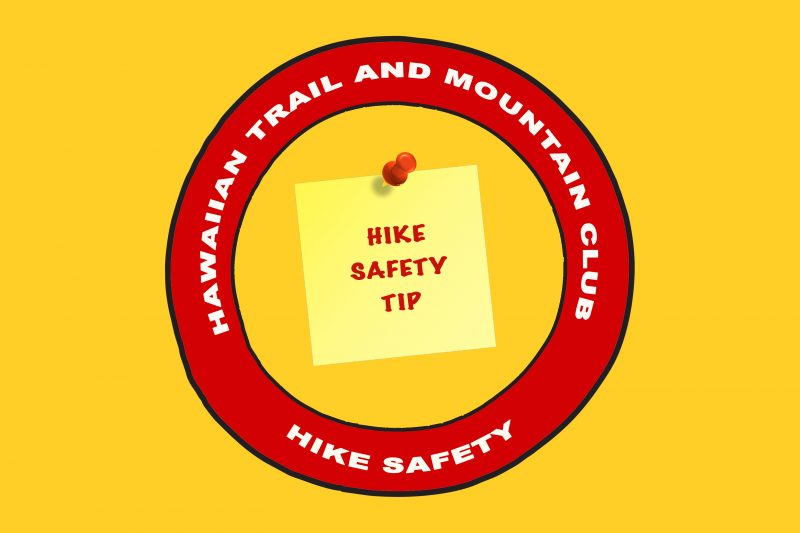It’s Hot! How to hike safely

It is hot, your friend is not “Ok”…what to do?
Do you stop and treat and continue the hike or do you call for a helicopter ASAP and try your best to cool your friend?
If they are HOT, RED and MAD (as in acting/talking crazy) think life-threatening heat stroke. The brain and other vital organs are cooking. Call 911 ASAP and start cooling them down.
Do you know how to prevent and treat the various forms of heat illness? In this article, the HTMC Hike Safety Committee will address health issues related to heat.
As your body temperature gets hotter and hotter, it is key that you take steps to prevent the situation from becoming life-threatening. As your body starts to overheat, you can experience mild symptoms, but these can progress to life-threatening heat stroke quickly.
How does the body cool itself?
As your temperature rises, your body attempts to get rid of the heat through radiation and evaporation. The increasing blood flow to the surface skin blood vessels warms the skin and allows for heat to radiate into the environment. Evaporative cooling happens when sweat evaporates from your skin. Sweat dripping from your skin is not cooling you down!
Unfortunately, radiation heat loss is less effective in hotter temperatures and evaporative heat loss is less effective on humid days. Heat and humidity are not a good combo.
Prevention
- Hydrate – but don’t over-hydrate! The drink-to-thirst approach is the current recommendation. Dehydration can lead to heat exhaustion. But overhydration can lead to life-threatening hyponatremia. Bring enough water for the length of the trail, time of year, weather, and how much you drink. Recommend 2-3 liters for a day hike.
- It is important to replace the electrolytes lost through sweat. Eat salty snacks/foods. Don’t depend on electrolyte sports drinks or additives alone.
- Urine should be pale yellow. Dark urine possibly indicates dehydration.
- Dress appropriately in light-colored, loose-fitting clothing.
- Rest frequently, ideally in the shade and/or breeze.
- Avoid the heat of the day if possible.
- Acclimatize. By acclimatizing to heat, we sweat faster and sooner but lose fewer electrolytes.
- If an option, take a dip in the stream or lake. Warning: You risk catching Leptospirosis through broken skin and your eyes, nose, or mouth in freshwater streams in Hawaii. Never drink stream water unless it has been filtered/treated.
Heat Illnesses
Heat cramps, heat syncope (fainting), heat exhaustion, and heat stroke are the most common types of heat illnesses.
Heat Cramps
Signs/Symptoms
- Muscle spasms due to electrolyte loss and dehydration
Treatment
- Hydrate and replace electrolytes.
- Rest in a shaded, cool area.
- Stretch muscles gently. Massaging might make cramps worse.
Heat Syncope
Fainting due to heat. Since the body is sending blood to the blood vessels in surface skin, less blood is available for the core and brain. This is especially a problem if you are dehydrated which causes less fluid availability for the circulatory system.
Signs/Symptoms
- Vertigo (dizziness)
- Sudden fainting
- Tunnel vision
- Nausea
- Weakness
Treatment
- Rest in a shaded, cool area. Lie flat if possible.
- Hydrate
Heat Exhaustion
The body is starting to show signs of overheating. Stop and treat before it becomes a life-threatening situation.
Signs/Symptoms
- Thirst and history of low fluid intake
- Reduced urine output that is darker in color than normal
- Weakness, lethargy
- Slightly elevated temperature
- Skin cool or warm with sweating
- Mild confusion, irritable but otherwise, mental function appears normal.
- Faintness – dizzy, lightheaded
- Headache
Treatment
- Rest in a shaded, cool area. Lie flat. Consider fanning your patient while spraying water on skin.
- Hydrate and replace electrolytes.
Heat Stroke
When body temperatures reach 104F degrees or higher, the brain and other vital organs are starting to “cook.” This is very serious with a high 20-70% mortality rate. Over 600 people die per year in the USA, some within 15-30 minutes of onset. Many survivors experience short term or permanent disabilities.
Key indicator of Heat Stroke: altered mental status. In a hot environment, if someone is acting delirious, combative, and/or very confused (altered), immediately start treating for heat stroke. Call 911 for help ASAP.
Signs/Symptoms
- Red, Hot and Mad (crazy)
- Delirious, combative
- Comatose
- Rapid pulse/respirations
- High body temperature – 105F or higher
- Hot, red skin (may be dry or sweaty)
Treatment
- Cool patient aggressively ASAP –
- Immersion in cold water is the quickest way, but a challenge with altered patients. Take precautions to prevent drowning.
- If immersion is not an option, constantly pour cold water over the patient and fan the patient.
- If possible, add ice/cold packs, ideally covering the whole body. Wilderness Medical Society is now recommending cold packs on cheeks, palms and soles. (There is less core cooling if applied to the head, neck, armpit, and groin.)
- Rest in a shaded, cool area.
- Only hydrate with water and possibly sodium or electrolytes if they become alert enough to drink and protect their airway. Make sure they take small sips without gagging.
- Call 911. Get to the hospital – even if the patient seems fine after cooling. Internal damage may have occurred. Think of the brain as the egg that is cooking in the skillet. You cool the egg. Does the egg go back to the way it was before it started cooking? No. Possible permanent damage to their brain, kidneys, and liver might occur even after cooling.
Hike safe & be safe this summer HTMCers!
Mahalo,
Your Hike Safety Advisory Committee
P.S. If you have a Hike Safety Tip that you would like discussed in an upcoming newsletter, email safety@htmc1910.org
